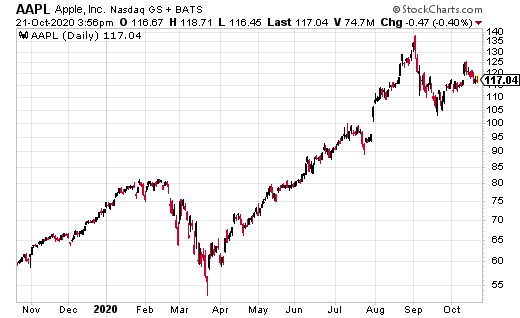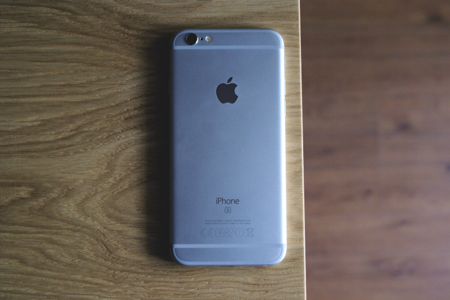In his inauguration speech on January 20, 1961, President John F. Kennedy famously encouraged Americans to: “Ask not what your country can do for you—ask what you can do for your country.”
I’m paraphrasing JFK’s line to explain to you the right way to look at the Wall Street buzz surrounding Apple (AAPL) and 5G: while Wall Street is giving fanciful numbers on what 5G will do for sales of the iPhone from AAPL, I think we should ask not what 5G can do for Apple, but what Apple can do for the rollout of 5G.
The reality is that 5G infrastructure here in the U.S. is woefully behind many Asian countries, including China. The mobile telecoms industry group, GSMA, predicts that a third of the world’s population will be able to access 5G by 2025.
It is still a question, though, whether all United States mobile phone users will be among those numbers.
To coincide with the launch of the newest iPhones, Verizon CEO Hans Vestberg announced the company would initiate its 5G network in the U.S. on Tuesday, following rivals T-Mobile last December and AT&T over the summer.
However, Gene Munster at Loup Ventures estimated that Verizon’s advertised download speeds–up to four gigabits per second in ideal circumstances–would only be available to a mere 1% of the U.S. population at launch. Munster also projects that at best, that number may hit 25% in a year or two.
5G Tipping Point
I believe Marc Allera, CEO of BT Consumer, got it right when he called the iPhone 12 launch “…a tipping point for 5G.”
The lack of availability is why there has been such slow consumer adoption of 5G over the past 18 months. And that is even though telecoms carriers claim that 5G can offer download speeds up to 20 times faster than existing 4G networks.
Analysts at two research firms—Canalys and IDC—estimate that just 13% of smartphones shipped globally in the first half of 2020 were 5G-capable.
To wake up this sleepy market, analysts and corporations alike hope Apple’s marketing power and loyal customer base will light a fire under 5G sales. In other words, telecoms executives are hoping past is prologue. Apple has had a very strong record in promoting growth in technology categories, including touchscreen phones, smartwatches, and the app market.
According to the aforementioned GSMA, telecoms operators are expected to spend 80% of their mobile capital expenditure, or nearly $890 billion, on 5G networks in the next five years.
That will drive 1.8 billion 5G connections by 2025. Or will it?
Most telecoms executives are still looking for a “killer app” that will transform the way consumers use their smartphones. Even the launch of the iPhone 12 has yet to change that reality.
The problems, though, go deeper than the lack of a killer app.
One problem is politics. The launch of 5G networks globally has coincided with increased pressure from the Trump Administration on governments around the world to ban Huawei, the world’s largest telecoms equipment supplier. This has stalled progress in not only the United States, but many other developed markets.
Another problem is gripes from shareholders. A huge amount of money is needed to build out 5G. A collapse in the share prices of some of the largest companies in the industry has put pressure on telecoms companies to justify the massive outlay of capital.
And of course, there has been a lack of good 5G phones. That should change now with the iPhone 12 launch.
At the launch of its newest handheld devices, Apple did try its best to play up how cool 5G will be. For example, one selling point touted by Apple was the iPhone 12 Pro’s ability to shoot, edit, watch and share high-quality video footage using the new Dolby Vision HDR format. The company illustrated this feature with footage of professional filmmakers shooting beautiful wild horses in a desert environment. Of course, Apple neglected to mention that most deserts are far from the densely populated urban areas where telecoms companies will first deploy their 5G networks.
So although in countries like China, 5G is happening now, in most developed western countries the 5G cycle is probably two years away at best.
History can be a guide here: telecoms firms tend to over-promise in the short-term, but vastly underestimate the impact of new technology over the long term. Once again, Apple will lead the way in the telecom innovation cycle. And it will end up doing a lot more for the telecoms industry than the inverse—but just not right away.







